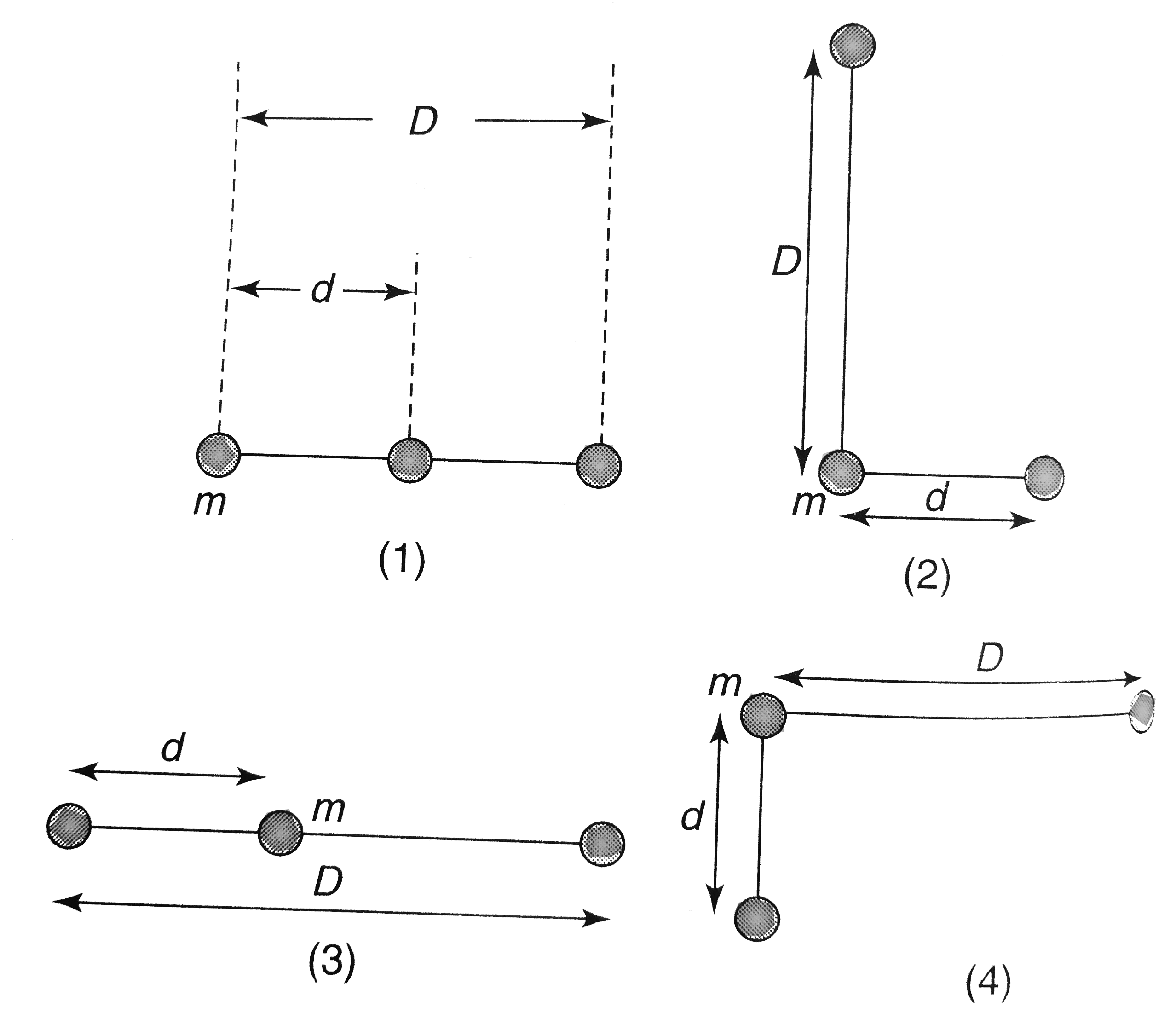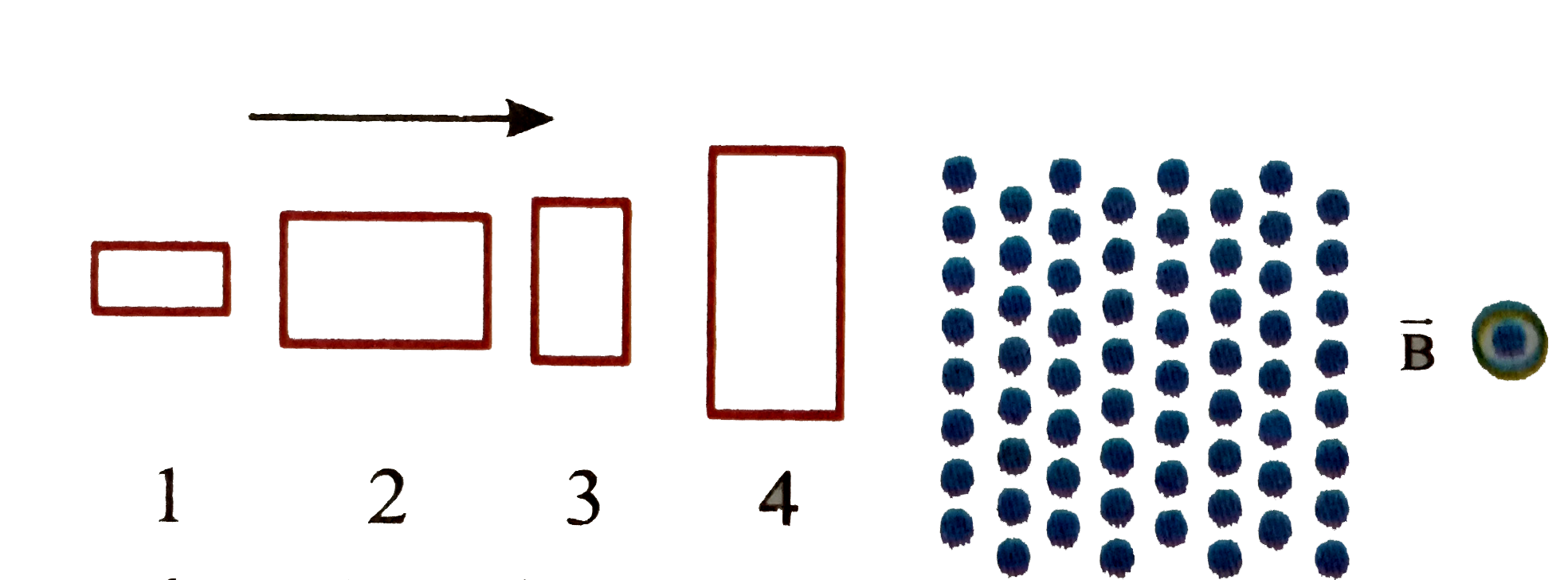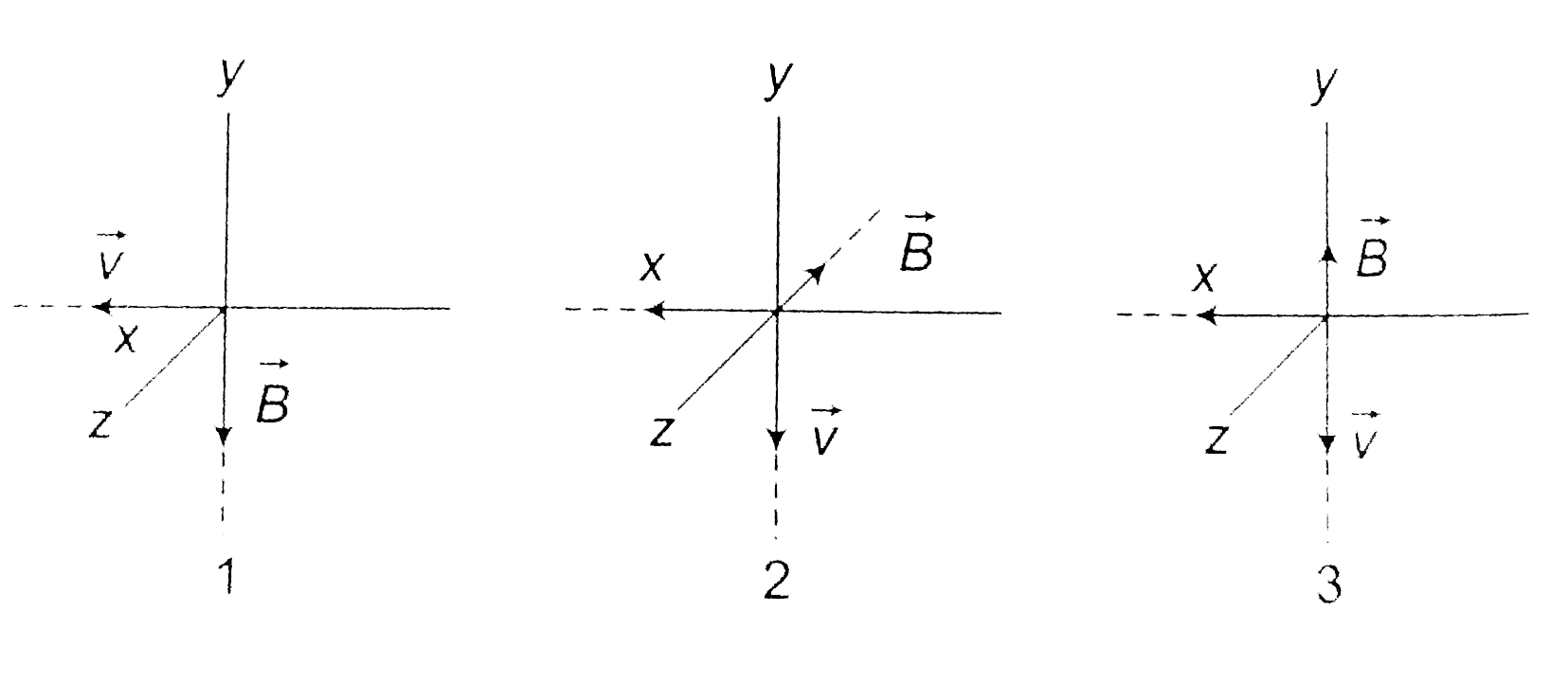The figure shows four directions for the velocity vector →v of a positively charged particle moving through a uniform electric field →E (directed out of the page and represented with an encircled dot) and a uniform magnetic field →B. (a) Rank directions 1, 2 and 3 according to the magnitude of the net force on the particle, greatest first. (b) Of all four directions, which might result in a net force of zero ?

(a) 2, then tie of 1 and 3 (zero), (b) 4
Topper's Solved these Questions
- MAGNETIC FORCEBOOK - RESNICK AND HALLIDAYCHAPTER - MAGNETIC FORCEEXERCISE - Problems
49 Videos
- MAGNETIC FORCEBOOK - RESNICK AND HALLIDAYCHAPTER - MAGNETIC FORCEEXERCISE - Practice Questions (Single correct Choice Type )
24 Videos
- MAGNETIC FORCEBOOK - RESNICK AND HALLIDAYCHAPTER - MAGNETIC FORCEEXERCISE - Practice Questions (Integer type )
7 Videos
- MAGNETIC FIELDS DUE TO CURRENTSBOOK - RESNICK AND HALLIDAYCHAPTER - MAGNETIC FIELDS DUE TO CURRENTSEXERCISE - Practice Question (Integer Type)
4 Videos
- MOTION ALONG A STRAIGHT LINEBOOK - RESNICK AND HALLIDAYCHAPTER - MOTION ALONG A STRAIGHT LINEEXERCISE - PRACTICE QUESTIONS ( Integer Type )
3 Videos
Similar Questions
Knowledge Check
The figure shows four arrangement of three particles of equal masses. Rank the arrangement according to the magnitude of the net gravitational force on the particle m, greatest first.
 A1, tie of 2 and 4, then 3B1,4,3,2C2,3,4,1D4,3,1,2
A1, tie of 2 and 4, then 3B1,4,3,2C2,3,4,1D4,3,1,2A charge particle moves with velocity →V in a uniform magnetic field →B . The magnetic force experienced by the particle is
Aalways zeroBzero, if →Band→V are perpendicualrCzero, if →Band→V are parallelDzero, if →Band→V are inclined at 45∘The figure shows four wire loops, with edge length of either L or 2L. All four loops will move through a region of uniform magnetic field →B (directed out of the page) at the same constant velocity . Rank the four loops according to the maximum magnitude of the e.m.f. induced as they move through the field, greatest first
 A(ec=ed)<(ea=eb)B(ec=ed)>(ea=eb)Cec>ed>eb>eaDec<ed<eb<ea
A(ec=ed)<(ea=eb)B(ec=ed)>(ea=eb)Cec>ed>eb>eaDec<ed<eb<ea
What is the direction of the force acting on a charged. Particle q moving with a velocity →v in a uniform magnetic field →B ?
View Solutionthe figure shows the path of A positively charged particle through a rectangular region of uniform electric field as shown in the figure. the direction of deflection of particle 2, 3 and 4 is

View SolutionThe figure shows four wire loops, with edge length of either L or 2L. All four loops will move through a region of uniform magnetic field →B (directed out of the page) at the same constant velocity . Rank the four loops according to the maximum magnitude of the e.m.f. induced as they move through the field, greatest first

View SolutionThe four wire loops shown figure have vertical edge lengths of either L,2L or 3L. They will move with the same speed into a region of uniform magnetic field →B directed out of the page. Rank them according to the maximum magnitude of the induced emf greatest to least.

View SolutionThe figure shows three situations when an electron moves with velocity →v travels through a uniform magnetic field →B. In each case, what is the direction of magnetic force on the electron

View Solution
